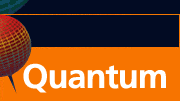CONTACTS
- Coordinator
Diego Dalvit
-
Quantum Lunch Location:
T-Division Conference Room, TA-3,
Building 123, Room 121
 |


Quantum Institute: Visitor Schedule
The Quantum Lunch is regularly held on Thursdays in the Theoretical Division Conference Room, TA-3, Building 123, Room 121.
For more information, contact Diego Dalvit.
To add your name to the Quantum Lunch email list, contact Charlotte Carter
Thursday, September 3, 2009
12:30 PM - 2:00 PM
Speaker: Dimitrie Culcer, University of Maryland
Technical Host: John Singleton
TOPIC: Singlet-triplet qubits in multivalley Si quantum dots
Abstract
Quantum dot (QD) spins are promising candidates for scalable quantum computation (QC). Electrical readout and
control of single spins in QDs have proven challenging, yet GaAs double QDs, where spin blockade and charge sensors
enable observation of single/two-spin dynamics, have seen impressive experimental progress. Recent experiments [1]
have demonstrated quantum coherence and the use of the two-electron singlet and unpolarized triplet as a qubit, with
reliable initialization, single-qubit rotation, and measurement. Yet the hyperfine interaction provides a fundamental
limit to spin lifetimes in GaAs, a fact which has spurred intense research into Si QDs. Silicon is often regarded as
the best semiconducting host material for spin qubits because of its excellent spin coherence properties: spin-orbit
coupling is very small while the hyperfine interaction can be reduced by isotopic enrichment. The biggest obstacle to
spin QC in Si is the valley degree of freedom, which I will discuss at length. At the Si/SiO2 interface two valleys are
relevant to the ground orbital state, which introduces fundamental complications in distinguishing spin and orbital
degrees of freedom. Scattering at the interface lifts the valley degeneracy by producing a valley-orbit coupling D, yet
the exact form and magnitude of D is generally not known a priori and is sample-dependent. With this in mind we
have established the precise criteria for realizing spin qubits in Si QDs [2]. I will show that, for small D, a singlet-triplet
qubit cannot be constructed since a number of different states may be initialized, leading to different experimental
outcomes. For large valley splitting (D>>kT) the experiment is analogous to GaAs. A Zeeman field can be used to
distinguish between different initialized states for any valley splitting, and sweeping a uniform magnetic field provides
a useful method for estimating D, which is particularly useful when D < kT. This work is supported by LPS-NSA
[1] J. R. Petta et al, Science 309, 2180 (2005).
[2] Dimitrie Culcer, Lukasz Cywinski, Qiuzi Li, Xuedong Hu, and S. Das Sarma, arXiv:0903.0863.
|


